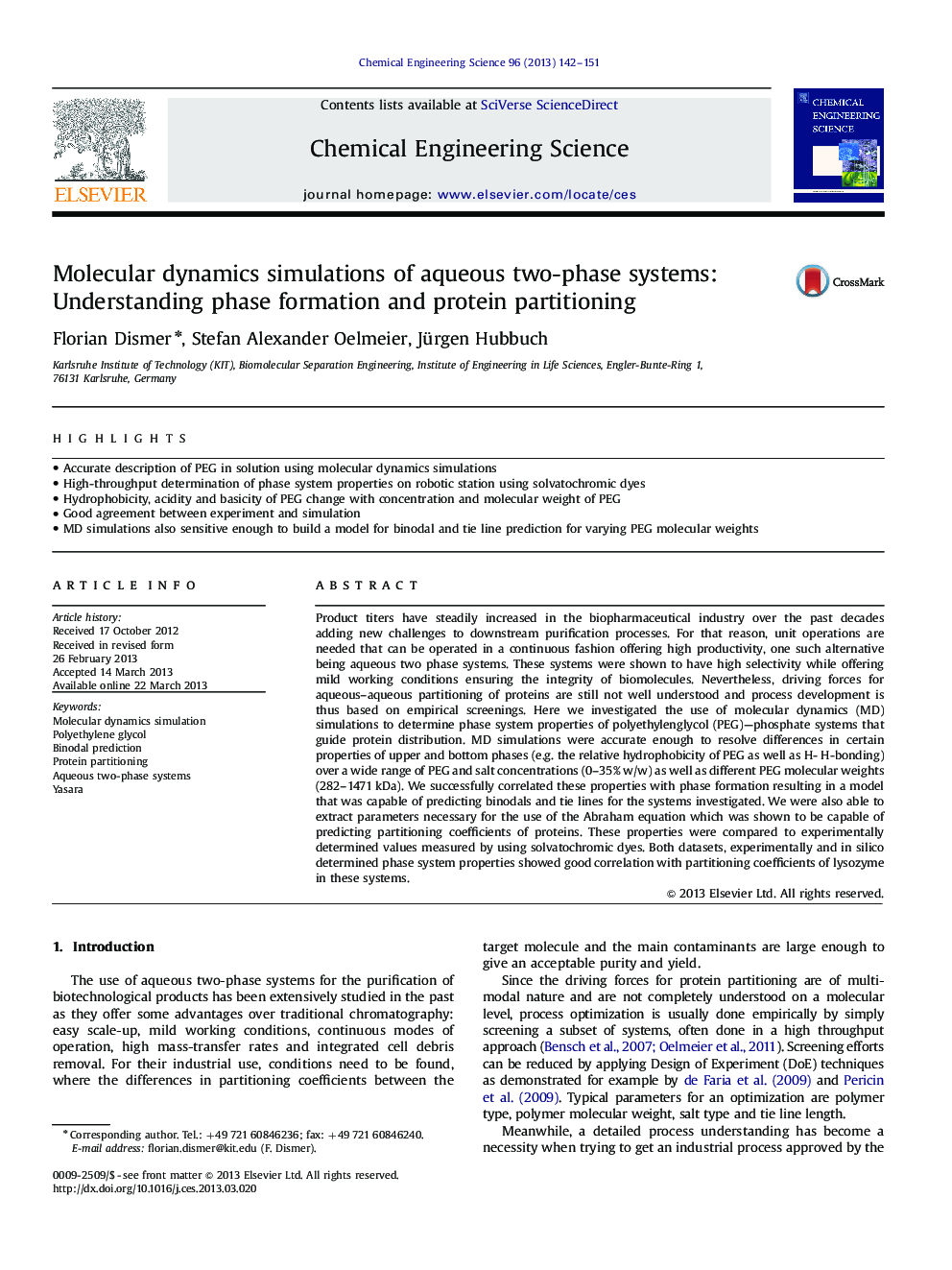| کد مقاله | کد نشریه | سال انتشار | مقاله انگلیسی | نسخه تمام متن |
|---|---|---|---|---|
| 155292 | 456889 | 2013 | 10 صفحه PDF | دانلود رایگان |

• Accurate description of PEG in solution using molecular dynamics simulations
• High-throughput determination of phase system properties on robotic station using solvatochromic dyes
• Hydrophobicity, acidity and basicity of PEG change with concentration and molecular weight of PEG
• Good agreement between experiment and simulation
• MD simulations also sensitive enough to build a model for binodal and tie line prediction for varying PEG molecular weights
Product titers have steadily increased in the biopharmaceutical industry over the past decades adding new challenges to downstream purification processes. For that reason, unit operations are needed that can be operated in a continuous fashion offering high productivity, one such alternative being aqueous two phase systems. These systems were shown to have high selectivity while offering mild working conditions ensuring the integrity of biomolecules. Nevertheless, driving forces for aqueous–aqueous partitioning of proteins are still not well understood and process development is thus based on empirical screenings. Here we investigated the use of molecular dynamics (MD) simulations to determine phase system properties of polyethylenglycol (PEG)—phosphate systems that guide protein distribution. MD simulations were accurate enough to resolve differences in certain properties of upper and bottom phases (e.g. the relative hydrophobicity of PEG as well as H- H-bonding) over a wide range of PEG and salt concentrations (0–35% w/w) as well as different PEG molecular weights (282–1471 kDa). We successfully correlated these properties with phase formation resulting in a model that was capable of predicting binodals and tie lines for the systems investigated. We were also able to extract parameters necessary for the use of the Abraham equation which was shown to be capable of predicting partitioning coefficients of proteins. These properties were compared to experimentally determined values measured by using solvatochromic dyes. Both datasets, experimentally and in silico determined phase system properties showed good correlation with partitioning coefficients of lysozyme in these systems.
Journal: Chemical Engineering Science - Volume 96, 7 June 2013, Pages 142–151